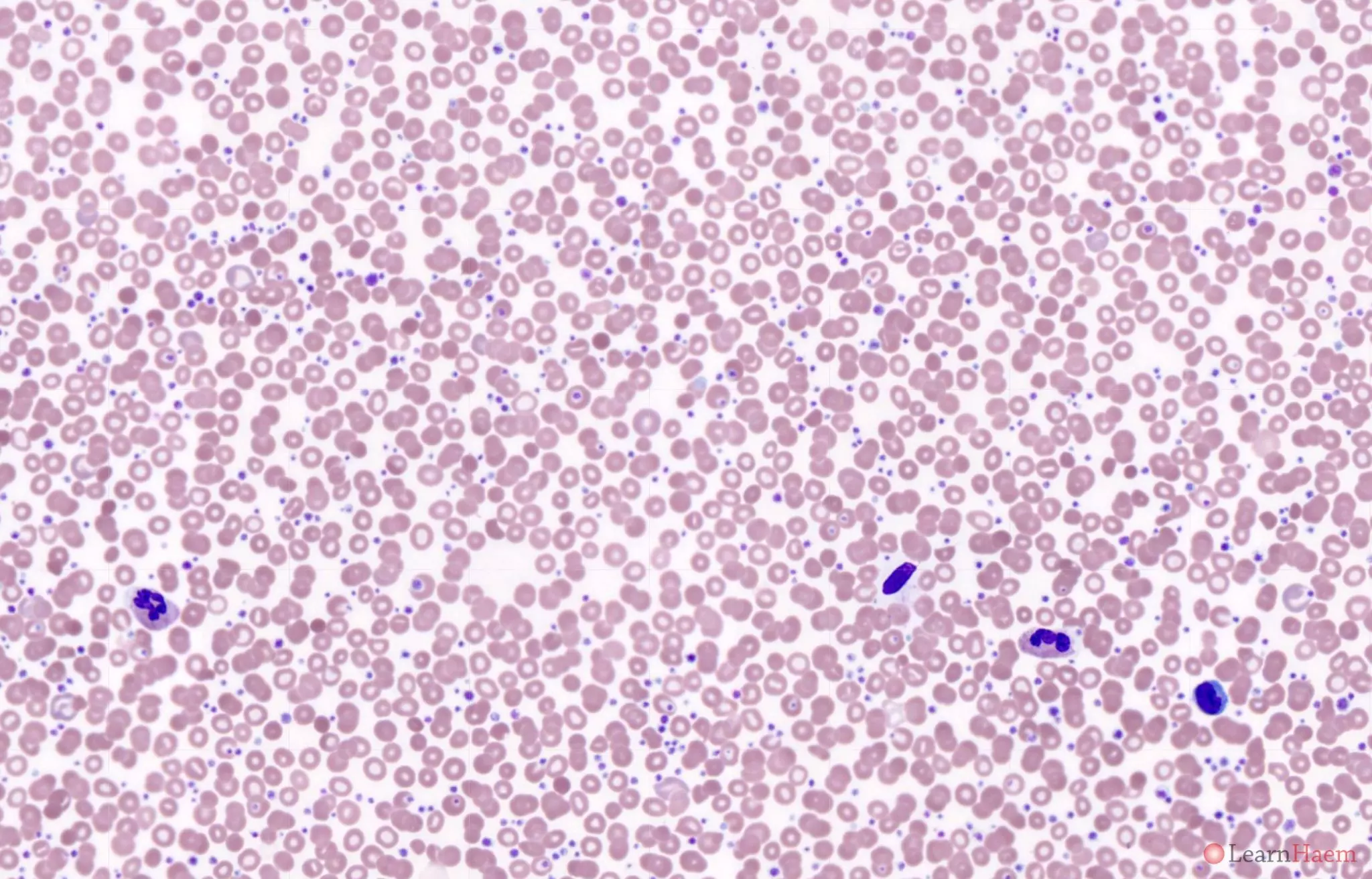Polycythaemia vera is a myeloproliferative neoplasm which is which are characterized by clonal proliferation of myeloid cells with variable morphologic maturity and haematopoietic efficiency. Clinically it is characterised by increased red cell mass.
Diagnostic criteria (WHO 2016)
Diagnosis of PV requires meeting either all 3 major criteria, or the first 2 major criteria and the minor criterion
Major criteria
- Haemoglobin >16.5 g/dL (Men) >16.0 g/dL (Women) / Haematocrit >49% (Men)/ Haematocrit >48% (Women) or Increased red cell mass
- Bone marrow biopsy showing hypercellularity for age with trilineage growth (panmyelosis) including prominent erythroid, granulocytic, and megakaryocytic proliferation with pleomorphic, mature megakaryocytes (differences in size)
- Presence of JAK2 V617F or JAK2 exon 12 mutation
Minor criteria
- Subnormal serum erythropoietin level


0 x
Blood Film Features:
- Mild to overt excess of normochromic, normocytic RBCs
- Neutrophilia
- Thrombocytosis


0 x
Blood film from a patient with polycythaemia vera and iron deficiency. Note the features of iron deficiency with a relatively high RBC count. Iron should not be replaced in such patients, as the iron deficiency is limiting the erythropoiesis.


0 x
Blood film from a patient with polycythaemia vera who is both iron deficient and on hydroxyurea.
Other features to look out for:
- Features of iron deficiency: microcytosis, pencil cells
- Hydroxyurea therapy (macrocytosis, stomatocytes, hypersegmented neutrophils on a background of leukoerythroblastosis)
Bone Marrow Features:
- Increased bone marrow cellularity
- Panmyelosis especially with increased erythroid and megakaryocytic precursors
- Megakaryocytes may have loose clustering and demonstrate some polymorphism


Leave A Comment